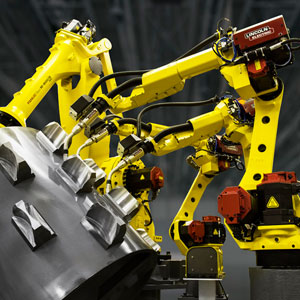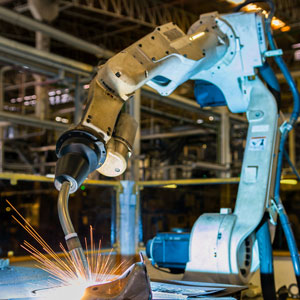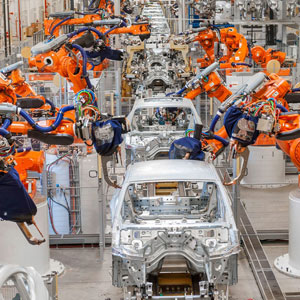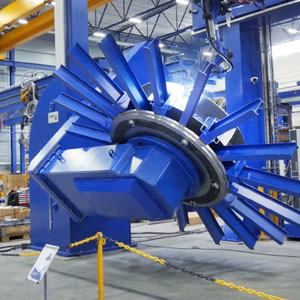Robotic welding
Robot welding is the use of mechanized programmable tools (robots), which completely automate a welding process by both performing the weld and handling the part. Processes such as gas metal arc welding, while often automated, are not necessarily equivalent to robot welding, since a human operator sometimes prepares the materials to be welded. Robot welding is commonly used for resistance spot welding and arc welding in high production applications, such as the automotive industry.
Robot arc welding has begun growing quickly just recently, and already it commands about 20% of industrial robot applications. The major components of arc welding robots are the manipulator or the mechanical unit and the controller, which acts as the robot's "brain". The manipulator is what makes the robot move, and the design of these systems can be categorized into several common types, such as SCARA and cartesian coordinate robot, which use different coordinate systems to direct the arms of the machine.
Advantages
Decreased production costs: The initial setup may seem intimidating and expensive, but you will find that the ROI outweighs these costs. With robotics, throughput speeds increase which impacts production and profits directly.
Cycle times are shorter: The manufacturing line becomes more efficient, making cycle times much shorter. More can be produced in this time as opposed to what is available when working with human employees.
Reliability and quality are improved: A machine does not make human errors, which means that the quality of your product will be consistent every time. Products are manufactured with the same specifications each time, and few repairs are needed.
Better floor space utilisation: By introducing automation to your workplace, you are able to decrease a footprint of a work area. This allows you to use the floor space for other operations and create more efficient processes.
Reduced waste: Because robots are so accurate, the amount of raw materials needed is decreased. This reduces the cost of disposing of waste and is also economical and cost-effective.
Workplace safety is increased and improved: Workers will no longer have to perform dangerous welding jobs, and can be moved into supervisory roles. Hazardous positions will fall away because the robots will perform the welding jobs that can cause injury and accidents.







